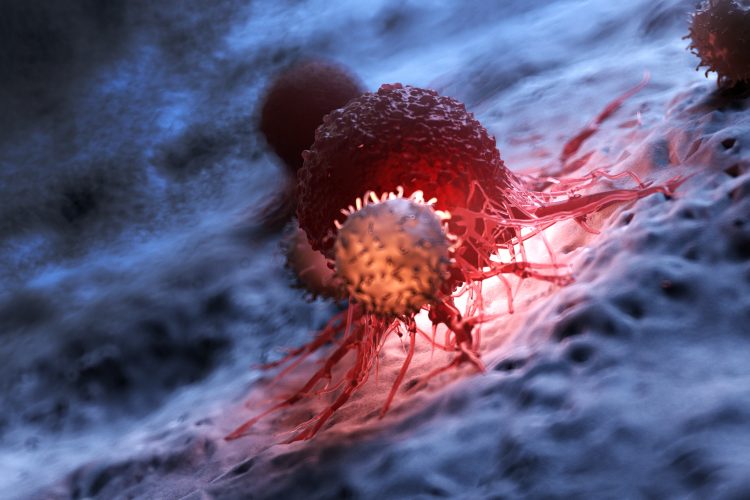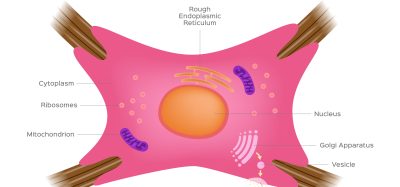Why most T-cell engagers fail – and how to fix it
Posted: 8 August 2025 | Dr Petra Dieterich (Senior Vice President - Abzena), Dr Rob Holgate (Research Manager - Abzena), Dr Thomas Cornell (Protein Engineering - Abzena) | No comments yet
Bispecific T-cell engagers are advancing fast – but complexity still slows development. This article explores how data-driven, platform-based strategies are helping overcome design and manufacturing hurdles to bring these next-gen therapies to patients faster.


Market outlook: a new wave of biologics
The biologics market is evolving rapidly. While monoclonal antibodies and antibody-drug conjugates continue to drive therapeutic pipelines, bispecific T-cell engagers (TCEs) are gaining momentum as a versatile and scalable class of immunotherapies. These molecules are designed to harness the immune system’s cytotoxic potential by simultaneously binding a tumour antigen and the CD3 receptor on T-cells, effectively bringing immune effectors into direct contact with cancer cells.
TCEs offer a streamlined, off-the-shelf alternative to complex cell-based therapies such as chimeric antigen receptor (CAR) T-cells, simplifying manufacturing and distribution. As clinical adoption accelerates and regulatory approvals increase, there are now four FDA-approved T cell engagers and 17 bispecific antibody therapies available on the global market.1,2
Driving this growth are unmet clinical needs in both hematologic and solid tumours, as well as increasing demand for targeted immunotherapies and advancements in antibody engineering platforms. Regulators are also providing clearer pathways for bispecifics, further fuelling TCE development. Despite this promise, the development of TCEs presents unique challenges that must be addressed to fully realise their potential. Structural complexity, manufacturing hurdles and immune-related safety concerns require a development approach that is both systematic and adaptable.
Biomarkers are redefining how precision therapies are discovered, validated and delivered.
This exclusive expert-led report reveals how leading teams are using biomarker science to drive faster insights, cleaner data and more targeted treatments – from discovery to diagnostics.
Inside the report:
- How leading organisations are reshaping strategy with biomarker-led approaches
- Better tools for real-time decision-making – turning complex data into faster insights
- Global standardisation and assay sensitivity – what it takes to scale across networks
Discover how biomarker science is addressing the biggest hurdles in drug discovery, translational research and precision medicine – access your free copy today
Designing bispecifics: potential meets complexity
The appeal of bispecific formats lies in their modularity. Developers can tailor symmetry, valency, spatial orientation, binding affinity and Fc characteristics to specific therapeutic needs. However, this design flexibility brings significant complexity, particularly in ensuring correct assembly, expression efficiency and clinical suitability.
Common issues include chain mispairing, poor stability, aggregation and on-target off-tumour effects. As any one of these can compromise efficacy or safety, early design decisions must strike a balance between molecular functionality and manufacturability.
To help address this, TCE developers can implement structured, platform-based approaches that prioritise rational design and early risk assessment. These platforms can be engineered to evaluate multiple constructs in parallel, enabling informed lead selection without delaying development timelines.


A T-cell engager is a bispecific antibody that binds both a tumour antigen and the CD3 receptor on T-cells, directing the immune cells to recognise and destroy cancer cells. Image credit: Vink Fan / Shutterstock
A platform-driven approach to TCE optimisation
Adopting a matrix-based design strategy is central to effective platform-based TCE development. This involves systematic evaluation of different construct architectures, including variations in dimerisation method, spatial arm arrangement and binding fragment format. Constructs typically target CD3 on T-cells and a tumour-associated antigen, and may incorporate silenced Fc regions to reduce nonspecific immune activation.
This matrix approach reduces the number of constructs required to gain meaningful insights across a diverse design space. The format diversity allows teams to simultaneously test key variables, such as spacing, flexibility and arm orientation, without committing to a single format too early. Each candidate in the matrix is then evaluated using a multi-step screening cascade designed to assess biophysical properties, functional performance and safety potential:
- Biophysical screening
After expression and purification, each construct should be analysed for yield, thermal stability and aggregation propensity. These early metrics help deprioritise candidates that may be difficult to manufacture or scale. Additional techniques, such as mass spectrometry, can be used to confirm correct chain pairing and molecular integrity. Assessments at this stage are particularly valuable, as some constructs may perform well in assays but prove difficult to express at consistent quality or yield.
- Functional assays
Functional evaluation begins with a T-cell activation reporter assay that measures immune engagement using CD3-expressing effector cells and tumour target cells. This provides an early readout of the mechanism of action by monitoring the activation of signalling pathways downstream of T-cell receptor (TCR) engagement.
Complementary to this is a peripheral blood mononuclear cell (PBMC) tumour killing assay. In this setup, tumour cells are fluorescently labelled and co-cultured with PBMCs in the presence of each construct. A live-cell imaging system tracks the lysis of tumour cells in real time, giving a visual and quantitative measure of cytotoxic activity. These assays serve as trusted first-pass tools to eliminate underperforming designs early, saving downstream development resources.
- Safety assessment
To assess the risk of cytokine release, whole blood assays can be performed. These measure the levels of cytokines like interleukin-6 (IL-6) and tumour necrosis factor-alpha (TNF-alpha) following incubation with candidate molecules. The goal is to identify constructs that activate T-cells without inducing excessive immune stimulation.
Cytokine release syndrome (CRS) is a well-known risk for TCE therapies, characterised by a rapid systemic inflammatory response, fever and potential organ dysfunction. By evaluating cytokine profiles in vitro, developers can flag molecules with higher risk profiles and reduce the chance of triggering adverse events in the clinic.
- Comparative triaging
All data collected from biophysical, functional and safety screens can be aggregated into a comparative matrix. This enables integrated assessment of candidates based on objective criteria, such as potency, safety margin, stability and ease of expression. By weighting each parameter based on development priorities, the results allow teams to select a lead candidate with the most balanced profile.
This structured triaging model facilitates data-driven decisions that help minimise risk while accelerating progress toward clinical evaluation.
Enabling scalable development
Platform-based approaches can extend beyond discovery, incorporating early manufacturability and process considerations. Expression systems, purification workflows and formulation protocols can be selected based on each molecule’s profile, ensuring alignment with downstream development needs.
Platform-based approaches can extend beyond discovery, incorporating early manufacturability and process considerations.
This alignment is particularly important for bispecifics, which often require more nuanced control during production compared to conventional monoclonal antibodies. Their structural complexity, including dual binding domains, potential for chain mispairing and varied formats, demands tighter oversight across expression, purification, and formulation steps. By evaluating key parameters early, teams can avoid costly redevelopment and streamline the transition to manufacturing, including eventual commercial-scale production. Technology transfer teams can also benefit from early analytics, which help define methodologies that define critical quality attributes (CQAs)
Analytical method development plays a central role here. Techniques such as capillary electrophoresis, high-resolution mass spectrometry and multi-angle light scattering can be integrated early to ensure identity, purity and aggregation are tightly monitored. With regulators focused on product consistency, these capabilities are essential for achieving clinical milestones and commercial viability.
Capillary electrophoresis, high-resolution mass spectrometry and multi-angle light scattering can be integrated early to ensure identity, purity and aggregation are tightly monitored.
The same platform principles are also applicable to emerging multi-specific constructs, such as tri- or tetra-specific immune engagers. As the industry explores increasingly complex formats, flexible and scalable strategies will be essential. Partnering with experienced contract development and manufacturing organisations (CDMOs) can help developers navigate these complexities, accelerate development timelines, and ensure readiness for scalable, cGMP-compliant manufacturing.
Looking ahead: the evolution of immune cell engagers
The field of immune engagers continues to diversify. Beyond TCEs, research efforts now include molecules that engage natural killer (NK) cells, macrophages and other immune effectors. This is reflected in over eight hundred new bispecific assets identified in the sector through 2024.3
As these therapies evolve, so too must the tools and processes used to develop them. A single-format approach is unlikely to be sufficient in the long term. Future success will depend on adaptable platforms that allow for rapid design iteration, robust screening and seamless scale-up.
New targets, combination strategies and engineered effector functions will likely shape the next wave of innovation. Integrating these elements into existing workflows will require flexible development infrastructure supported by advanced analytics and a cross-functional mindset.
Efforts to standardise workflows while accommodating molecular diversity will help reduce development costs, shorten timelines and improve clinical success rates. Partnering with CDMOs that offer integrated development capabilities can further support this process, helping developers streamline complex programs from design through to manufacturing.
A platform-based path to clinical success
TCEs are emerging as a transformative class of therapeutics, positioned between traditional antibody therapies and complex cell-based approaches. Their ability to harness the immune system in a targeted and scalable manner holds significant potential for transforming cancer care.
However, unlocking this potential requires more than just innovative molecule design. It calls for a disciplined, platform-based development model that integrates structural design, bioassay evaluation and manufacturability from the outset.
By applying these principles, development teams can improve efficiency, reduce risk and accelerate the path to clinic, therefore ensuring that promising therapies reach patients faster and with greater confidence.
References
- PatSnap Synapse. How many FDA-approved T-cell engagers (TCEs) are there? [Internet]. Available from: https://synapse.patsnap.com/article/how-many-fda-approved-t-cell-engagers-tce-are-there
- Kuick Research. Global bispecific antibodies market size to surpass US$50 billion by 2030 [Internet]. Global News Wire; 2025 Mar 17. Available from: https://www.globenewswire.com/news-release/2025/03/17/3043524/0/en/Bispecific-Antibodies-Market-Size-Approved-Bispecific-Antibody-Sales-Price-Patent-Market-Forecast-2030.html
- Hanson Wade. 2024 Bispecific Beacon landscape review [Internet]. Bispecific Beacon. Available from: https://beacon-intelligence.com/landscape-reviews/bispecific/
Meet the authors:


Thomas Cornell gained his PhD from Kings College London in the field of chemical biology. He then moved into the biotech startup space and spent almost a decade in preclinical vaccine research and development, focused on subunit vaccines. After working on over 20 protein families, Tom has gained a wealth of protein engineering experience. Tom joined Abzena in 2023 and works within the protein engineering department working on pre-clinical development of Antibody drug candidates.


Dr Dieterich has 30 years’ experience of drug development in the pharmaceutical industry with a focus on supporting CMC activities. She has held leadership positions in Project Management, Technical Operations and Business Development. Working in the CRO and CDMO environment she has led projects for customers across the globe, helping them to achieve their goals in clinical trials and low volume commercial manufacture. Petra holds a D.Phil in synthetic organic chemistry and an MBA from Imperial College London.


Rob has over 25 years’ experience in drug discovery and early-stage development. After obtaining his PhD in molecular medicine at UCL, he moved to The University of York as a post-doctoral researcher. He subsequently worked at Cambridge Antibody Technology before joining Antitope (now Abzena) in 2008 as Research Manager, then leading Abzena’s Discovery and Protein Engineering group. Now, as VP Research and Innovation, Rob plays a key role working with clients to understand the challenges they may face during discovery and early development to help them develop safe and effective therapies.
Related topics
Analysis, Analytical Techniques, Antibodies, Antibody Discovery, Assays, Biologics, Biopharmaceuticals, Biotherapeutics, Cancer research, Cell-based assays, Chimeric Antigen Receptors (CARs), Cytokines, cytotoxicity, Cytotoxicity assays, Drug Development, Immuno-oncology, Immunogenicity, Protein Expression, T cells
Related conditions
hematologic tumours, solid tumours
Related organisations
Abzena








